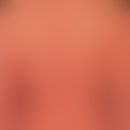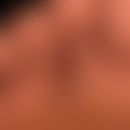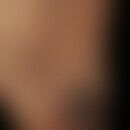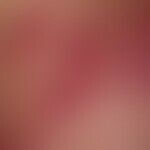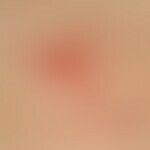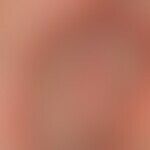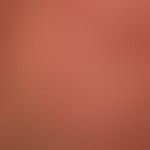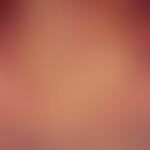Synonym(s)
Pustula; pustule
DefinitionThis section has been translated automatically.
A pus-filled, follicular or non follicular, intra- or subepidermal cavity. A pustule is of medium or deep intraepithelial localization, round or oval in configuration and usually hemispherical or flat raised. In case of high intraepithelial location (subcorneal pustule), the pustule is not rounded but rather bizarre, star-shaped configured, with a flaccid pustular roof, which bursts after a few hours already.
ClassificationThis section has been translated automatically.
S.u. Dermatoses, pustular.
You might also be interested in
General informationThis section has been translated automatically.
- Follicular pustules are punctiform and are placed at regular intervals from each other due to the follicle attachment. Pustules are often surrounded by an inflammatory halo. In infants, pustules can also be bound to the sweat gland ducts (e.g. periporitis of the infant). The colour of the pustules is yellow-white or yellow-green. Their contents may be sterile (sterile pustules) or contain pathogenic germs.
- Non-follicular pustules are mainly found in the pustular variants of psoriasis. In these clinical pictures the pustules are sterile.
- A pustular pimple can develop primarily or secondarily due to superinfection of a previously sterile vesicle (e.g. in herpes simplex).
- Pustules do not persist for long, but burst. Their content dries to a yellowish to yellowish-brown crust. After removal of the crusts, weeping erosions or ulcers remain.
DiagnosisThis section has been translated automatically.
- The possibility of a pre-existing skin disease must be determined in the medical history. During the clinical examination, the localisation (face, trunk, mechanically exposed areas), the distribution pattern (solitary, disseminated, exanthematic), its arrangement (grouped, anular, herpetiform), the size, shape, wall structure and content of the pustule itself (sterile, containing bacteria or fungi) and the condition of the surrounding skin (inflammatory or normal) should be assessed. Of differential diagnostic importance are accompanying symptoms such as itching and pain.
- For the clinical differential diagnosis it is important to distinguish between follicular and non follicular pustules. This distinction is easy to make and has a high diagnostic value, since binding of a pustle to the follicular apparatus suggests a bacterial genesis (pyoderma).
- A further differentiation results from the distribution pattern of a pimple-forming disease. The efflorescences can occur solitary (folliculitis), locally grouped (pustulous herpes simplex, pustulous due to bacterial superinfection), localised on the palms of the hands and soles of the feet (pustulosis palmo-plantaris) and generalised exanthematic (acute generalised exanthematic pustulose [= AGEP]; psoriasis pustulosa generalisata; candida sepsis).
- In exanthematic pustuloses, generalization can be the result of septicaemia caused by pyogenic germs (especially staphylococci, Pseudomonas and Candida species). The septic pustulosis is then intermittently highly febrile (septic temperatures) and is accompanied by a severe disorder of the AZ. The pustules in septic pustuloses are 0.2-0.3 cm in diameter and usually have a wide erythematous courtyard. Each pustular lesion corresponds to a bacterial embolus. In candida sepsis in conjunction with a severe immune disorder, the base of the pustule often becomes necrotic and may ulcerate.
- Especially in the neonatal period, disseminated pustules are always suspected of bacterial sepsis (streptococci, staphylococci, pseudomonas).
Notice! Pustules in the neonatal period are always suspected of septic pustulose (bacterial sepsis) (streptococci, staphylococci, Pseudomonas).
LiteratureThis section has been translated automatically.
- Altmeyer P (2007) Dermatological differential diagnosis. The way to clinical diagnosis. Springer Medicine Publishing House, Heidelberg
- Nast A, Griffiths CE, Hay R, Sterry W, Bolognia JL. The 2016 International League of Dermatological Societies' revised glossary for the description of cutaneous lesions. Br J Dermatol. 174:1351-1358.
Ochsendorf F et al (2017) Examination procedure and theory of efflorescence. Dermatologist 68: 229-242


